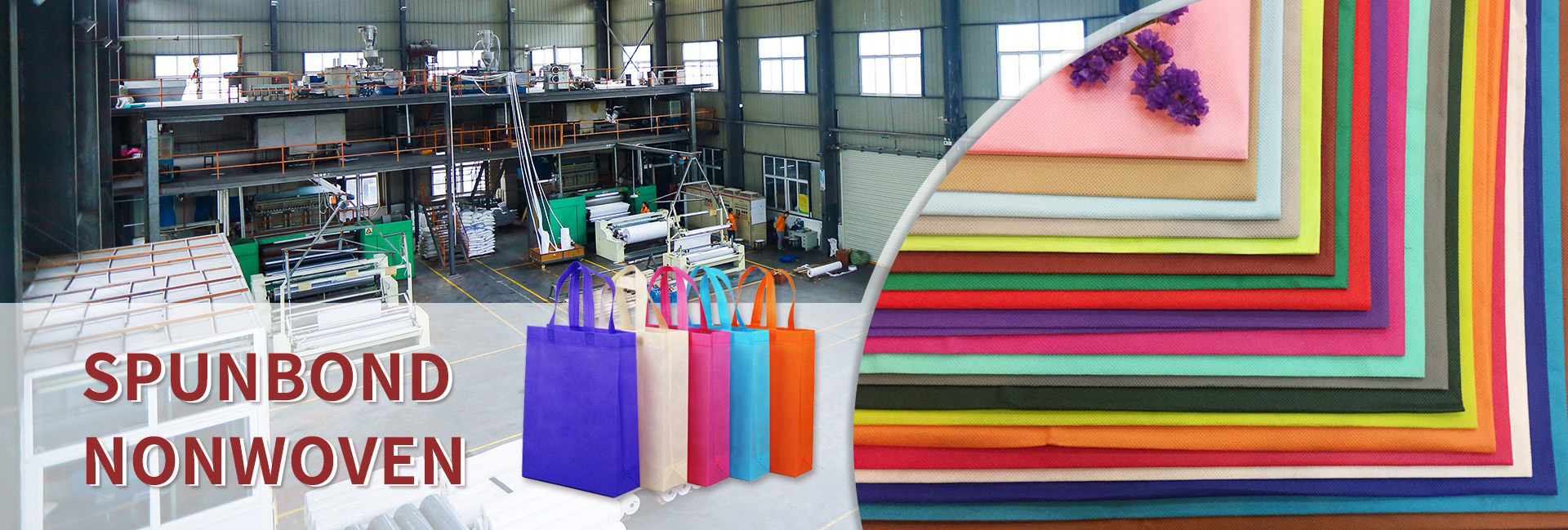PP non-woven fabric, made of polypropylene as raw material, also known as polypropylene fiber, is a lightweight non-woven fabric.
The uniqueness of PET non-woven fabric
PET, As a brand new polyester raw material, which we call polyester fiber, its production process does not contain any additives at all. This makes it an excellent environmentally friendly product, and it also belongs to the category of thick non-woven fabrics.
The significant characteristics of PET non-woven fabric
Firstly, PET spunbond filament nonwoven fabric has excellent water repellency. The water repellent performance of this non-woven fabric will increase with the increase of weight, that is, the thicker the non-woven fabric, the better its water repellent effect. When water droplets fall onto its surface, they will directly slide off, demonstrating excellent waterproof effect.
Secondly, PET non-woven fabric is also resistant to high temperatures. Due to the melting point of polyester reaching about 260 ° C, this non-woven fabric can maintain stable size and shape in high temperature environments. Therefore, it has been widely used in various fields such as heat transfer printing, transmission oil filtration, and the manufacturing of high-temperature composite materials.
More advantages of PET spunbond nonwoven fabric
Thirdly, polyester (PET) spunbond nonwoven fabric, as a type of filament nonwoven fabric, has performance second only to nylon spunbond nonwoven fabric. With its excellent strength, superior air permeability, and excellent tensile, tear and aging resistance, it is increasingly favored by people and widely used in many industries.
Fourthly, polyester (PET) spunbond nonwoven fabric also has a unique physical property – resistance to gamma rays. This means that in medical applications, it can accept gamma ray disinfection treatment without losing its physical properties or dimensional stability. This is significantly different from polypropylene (PP) spunbond nonwoven fabric.
The wide application of PET spunbond nonwoven fabric
Polyester (PET) spunbond nonwoven fabric has a wide range of applications, covering multiple industries such as healthcare, hygiene, agriculture, and packaging. Its excellent physical properties and chemical stability make it an ideal choice for many application scenarios. Especially in the medical field, its anti gamma ray properties have been widely recognized and applied.
Diversified applications of PET spunbond nonwoven fabric
The application of polyester (PET) spunbond nonwoven fabric is ubiquitous, appearing in various fields such as home textiles, packaging, decoration, agriculture, waterproof materials, industrial applications, and daily life. In terms of home textiles, it is made into anti velvet lining, heat transfer printed non-woven calendar, office file hanging bag, etc., bringing convenience to home life. In the field of packaging, it is widely used in cable wrapping, handbags, container bags, etc. to ensure the safety and hygiene of items. In addition, PET spunbond nonwoven fabric also plays an indispensable role in decoration, agriculture, waterproof materials, and industrial applications.
Comparison between PP polypropylene non-woven fabric and PET polyester non-woven fabric
When exploring the diversified applications of PET spunbond nonwoven fabric, we inevitably compare it with another common nonwoven material – PP polypropylene nonwoven fabric. These two materials have their own strengths and advantages in different application scenarios. For example, in terms of softness and durability, PET spunbond nonwoven fabric often outperforms, while PP polypropylene nonwoven fabric performs better in water resistance and chemical resistance. Meanwhile, there are certain differences in production processes and costs between the two, which together determine their applicability in their respective application fields.
When exploring the differences between PP polypropylene and PET polyester non-woven fabric materials, we found several noteworthy characteristics. Firstly, PP raw materials are affordable, while PET raw materials are relatively expensive. In addition, PP waste can be recycled, while PET waste cannot be recycled, which gives PP a slight cost advantage. Secondly, in terms of high temperature resistance, PET performs even better, with a high temperature resistance of around 290 degrees, compared to PP’s high temperature resistance of about 200 degrees. Furthermore, in the printing process of non-woven fabrics, due to the higher shrinkage rate of PP compared to PET, PET exhibits better heat transfer effect and can also reduce waste. In summary, these two non-woven materials exhibit their own characteristics and advantages in terms of raw material cost, high temperature resistance, and printing effect.
1. In terms of tensile strength, tension, and load-bearing capacity, PET non-woven fabric with the same weight exhibits stronger performance compared to PP non-woven fabric. Specifically, the tensile strength, tension, and load-bearing capacity of PET non-woven fabric weighing 65 grams are comparable to those of PP non-woven fabric weighing 80 grams.
2. From an environmental perspective, PP non-woven fabric may be mixed with recycled PP waste, while PET non-woven fabric is entirely made of brand new polyester chips, making PET superior in terms of environmental protection and hygiene.
Dongguan Liansheng Non woven Technology Co., Ltd. was established in May 2020. It is a large-scale non-woven fabric production enterprise integrating research and development, production, and sales. It can produce various colors of PP spunbond non-woven fabrics with a width of less than 3.2 meters from 9 grams to 300 grams.
Post time: Apr-18-2025

